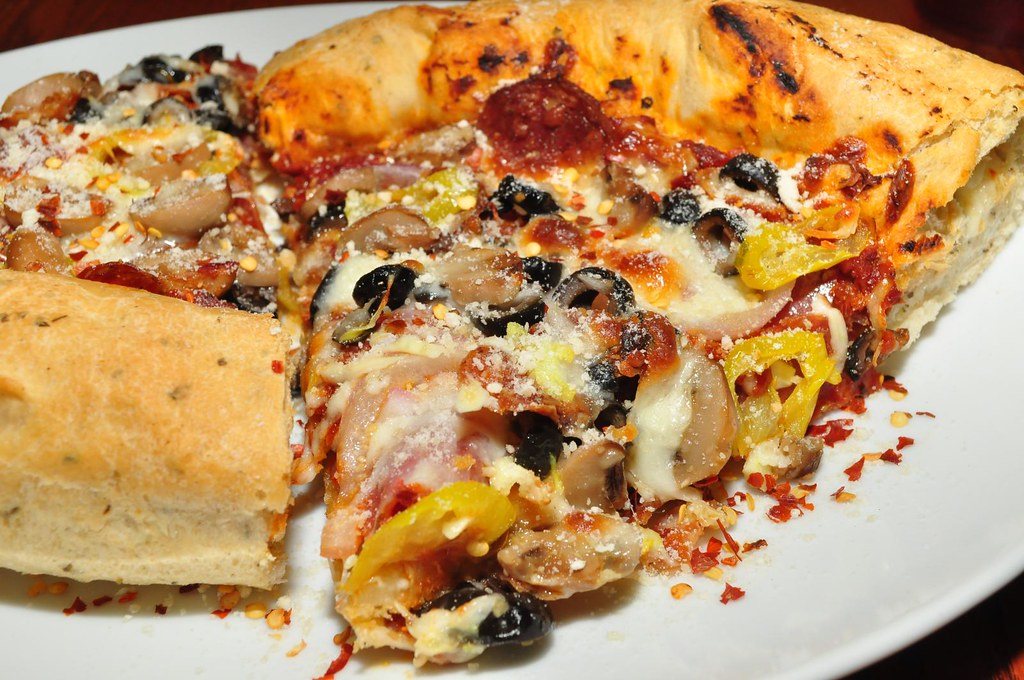Pizza and pasta are two of the most popular and recognisable foods in the world, and they have been tantalising palates for generations. But is pizza pasta, or does it belong in a separate, equally delectable category?
Interesting culinary debates arise when the distinction between pizza and pasta is raised. Despite their similarities, pizza and pasta are essentially different foods with their own distinct histories, ingredients, and ways of preparation.
Unleavened dough, a mainstay of Italian cooking, is used to make pasta. It normally consists of durum wheat semolina, water, and occasionally eggs. It is typically cooked before being served with a variety of sauces, vegetables, meats, or cheeses. It comes in a range of sizes and forms.
Contrarily, pizza, which is also an Italian dish, has a round or rectangular crust made of leavened dough that typically contains flour, water, yeast, salt, and olive oil. Then, a variety of toppings, including tomato sauce, cheese, meats, veggies, and herbs, are placed on top. In an oven, pizza is baked, giving it a distinctive crispy texture and allowing the flavours to mingle.
Although they both have Italian origins and employ dough as a base, pizza and pasta are distinct as separate cuisines due to their preparation, presentation, and flavour combinations.

What are the key differences in the dough used for pizza and pasta?
The dough used for pizza and pasta differ significantly in terms of ingredients, texture, and preparation methods. Here are the key differences:
- Ingredients: Typically, the ingredients for pizza dough are straightforward: flour, water, yeast, salt, and olive oil. In some recipes, extra flavourings like sugar or herbs may be included. The goal is to produce a dough that is elastic but still malleable so that it can be stretched and moulded into the base of a pizza. Contrarily, the ingredients for making pasta dough include durum wheat semolina, water, and occasionally eggs. Semolina’s high protein content is what gives pasta its distinctive stiffness and ability to maintain shape during cooking. Similar to fresh pasta, egg pasta is richer and has a distinct flavour profile from regular pasta, which is manufactured only with semolina and water.
- Texture: When baked, pizza dough is meant to be soft with a barely crunchy outside crust. A balance between a soft crumb and a crispy exterior is desired. After cooking, pasta dough has a smooth, sensitive texture, especially when rolled out thinly. Depending on the type of pasta used, different textures are prefered, ranging from al dente (hard to the bite) for traditional Italian pasta dishes to softer textures for some filled pastas, such as ravioli or gnocchi.
- Leavening: Typically, pizza dough is leavened with yeast, which causes the dough to rise and form air pockets, giving it an airy and light quality. Unleavened means that there is no yeast or other leavening agent in the dough for pasta. Instead, the gluten is developed by working and kneading the dough, giving it its recognisable chewy texture.
- Shape and Preparation: Depending on the type of pizza being made (e.g., thin crust, deep-dish), the thickness of the circular or rectangular base of the pizza is formed from the pizza dough. Typically, the dough is par- or pre-baked before being topped and cooked once more. The thin sheets of pasta dough are cut into different shapes, such as spaghetti, fettuccine, penne, or farfalle. Pasta comes in a wide range of sizes and forms, and the dough is often boiled or cooked in boiling water before being served with a variety of sauces and toppings.

Which is Healthier, Pizza or Pasta?
The ingredients, amount size, cooking techniques, and toppings are just a few of the variables that affect how healthy pizza or pasta is. Here is an overview of comparisons:
- Calories: Pizza and spaghetti both have the potential to be high in calories, particularly if they are topped with cheese, meats, and thick sauces. However, compared to pizza, which sometimes comes in larger servings, pasta meals are frequently easier to control in terms of portion sizes.
- Nutrition: Compared to refined pasta, whole wheat or other whole grain pasta can provide more fibre and minerals. Because the bran and germ are still present in whole wheat pasta, it has additional fibre, vitamins, and minerals. Pizza, on the other hand, offers a more well-balanced food profile because it can be customised with different vegetables and lean protein.
- Sauces and Toppings: The choice of sauce and toppings has a big effect on how healthy both foods are. Lycopene and other advantageous ingredients are present in tomato-based pizza and pasta sauces. Cream-based or high-calorie pasta sauces, however, might add extra calories. Saturated fat-rich pizza toppings like excessive cheese and processed meats should be avoided for your health.
- Gluten and Carbs: There are options for gluten-free pasta and pizza dough if you are sensitive to or intolerant of gluten. Remember that substitutes without gluten could have different nutrient profiles.
- Serving Size: For both recipes, portion control is crucial. Overconsumption of calories might result from eating too much pasta or pizza.
- Customization: Pizza has the benefit of allowing for more customisation. It may be a healthier option because you can select healthier options like thin crust, lighter cheese, and lots of vegetables.
In conclusion, if made with nourishing ingredients and eaten in moderation, both pizza and pasta can be a component of a healthy diet. To enjoy these recipes without compromising on health, choose whole grain pasta, use nutrient-rich toppings, and eat in moderation. A balanced diet is essential for good health in general.
Relevant Articles
How To Make Frozen Pizza Crust Softer?
What Happens If A Frozen Pizza Thawed In Car?

Comments are closed